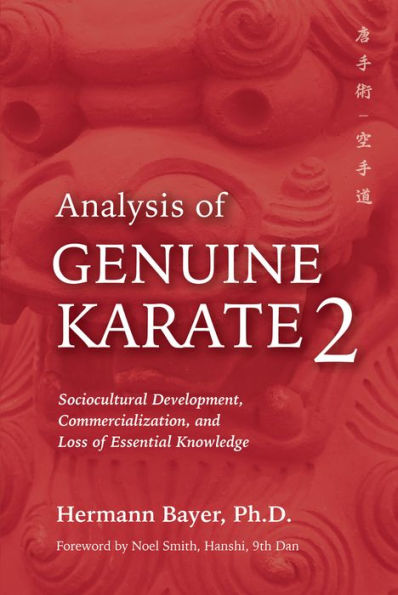Table of Contents
Introduction: Structure of the Text, Research, and Analysis
Content and Structure
Methods and Analysis Used
Quantitative and Qualitative Research Characteristics
Chapter I: Avoiding a Fundamental Misunderstanding: Why Different Terms Are Needed for Today’s Different Karate Variations
Classic Okinawan Karate Jutsu
Traditional Japanese Karate-Do
Modern Sports-Karate
Chapter II: Did Karate-Jutsu Originate in Okinawa or in China? A Contribution to Historic Reasoning in Martial Arts History
Throughout History Foreign Knowledge Is Integrated into Existing Ideas
China Is the Birthplace of Ch'üan fa,
Japan Is the Birthplace of Bu-Jutsu,
Okinawa Is the Birthplace of Karate-Jutsu
Is the Presented Reasoning Plausible?
Summary Chapter II
Chapter III: Japan’s Assertion of Okinawan Karate―How a Sub-Cultural Intangible Heritage Is Used as a National Cultural Symbol
Okinawa’s History Creates Unique Socio-Cultural Conditions
Assertion of a Sub-Cultural Symbol as a National Cultural Symbol
- The First Reason For The Japanization of Okinawan Karate: Japan’s Preparations for War
- Karate and Budo as Means to Create an All-Embracing Warrior Spirit
- Karate as Means to Secure the Human Raw Material for Japan’s Armed Forces and to Demonstrate Socio-Cultural Superiority
- The Second Reason For The Japanization of Okinawan Karate: Japan’s Cultural Integration Efforts
- Conformity and Group Orientation in Japanese Culture
- Senpai Seniority as Social Mechanism to Integrate Karate into Japan’s Martial Arts Tradition
Summary Chapter III
Chapter IV: The Metamorphosis of an Ancient Fighting Art into Athletic Showmanship
Commercialization of Sports-Karate and Its Consequences
- Consequence One: Loss of Essential Knowledge
- Offensive Moves Changed into Defensive Ones
- Systematic Knowledge About Nerve Strikes And Grappling Came to Be Patchy
- Excurse: A Psychological Perspective of Sensei Itosu’s Motivation to Teach Karate to Kids
- Consequence Two: The Unity of Kata and Kumite Separated into Unconnected Sport Disciplines
- Kumite’s Changed Purpose in Sports Karate
- Kata’s Changed Role and Purpose in Sports Karate
- Consequence Three: The Modern Misconception of Avoiding a Fight by All Means
- Karate-Jutsu’s Initial Moral Code
- Modern Alterations
- Violence against Women, Karate-Jutsu and Karate-Do (by Dr. Joyce Trafton)
Summary Chapter IV
Chapter V: The Path to Mastery in Karate-Jutsu―Growing into Higher Levels of Understanding Karate-Jutsu
Three Core Components of Mastery
- Advanced Stage of Holistic Perception and Insight
- Advanced Level of Knowledge and Understanding
- “Automatic” Application of Insight and Knowledge
Milestones on a Path towards Mastery
“Inductive” vs. “Deductive” Learning Karate-Jutsu
Sensei Correct Errors and Blunders, Mistakes You Have to Correct Yourself
No More True Mastery in Today’s Changed World?
Summary Chapter V
Chapter VI: The Outlook―What Happens to Karate in the 21st Century?
‘Arts and Crafts Movement’ as Counterculture to Industrialization Offers a Historic Blueprint
Today’s Karate-Jutsu Movement Is the Counterculture to Karate-Do’s Industrialization
- Postwar Industrialization and Commercialization of Japanese Karate-Do
- ‘Back to the Roots’ Karate-Jutsu Movement as Countercultural Response
The Resulting New Market Structure
- Sports-Karate Remains the Prevalent Type
- Karate-Do Perpetuates Japanization’s Lasting Impact but Will Improve with Additional Karate-Jutsu Incorporations
- A Group of Dedicated Karate-Jutsu Curators Will Secure the Art’s Genuine Points of Reference
List of Abbreviations
Explanation of Asian Terms
List of Photos and Graphs
References
Index
Bibliographical Note



